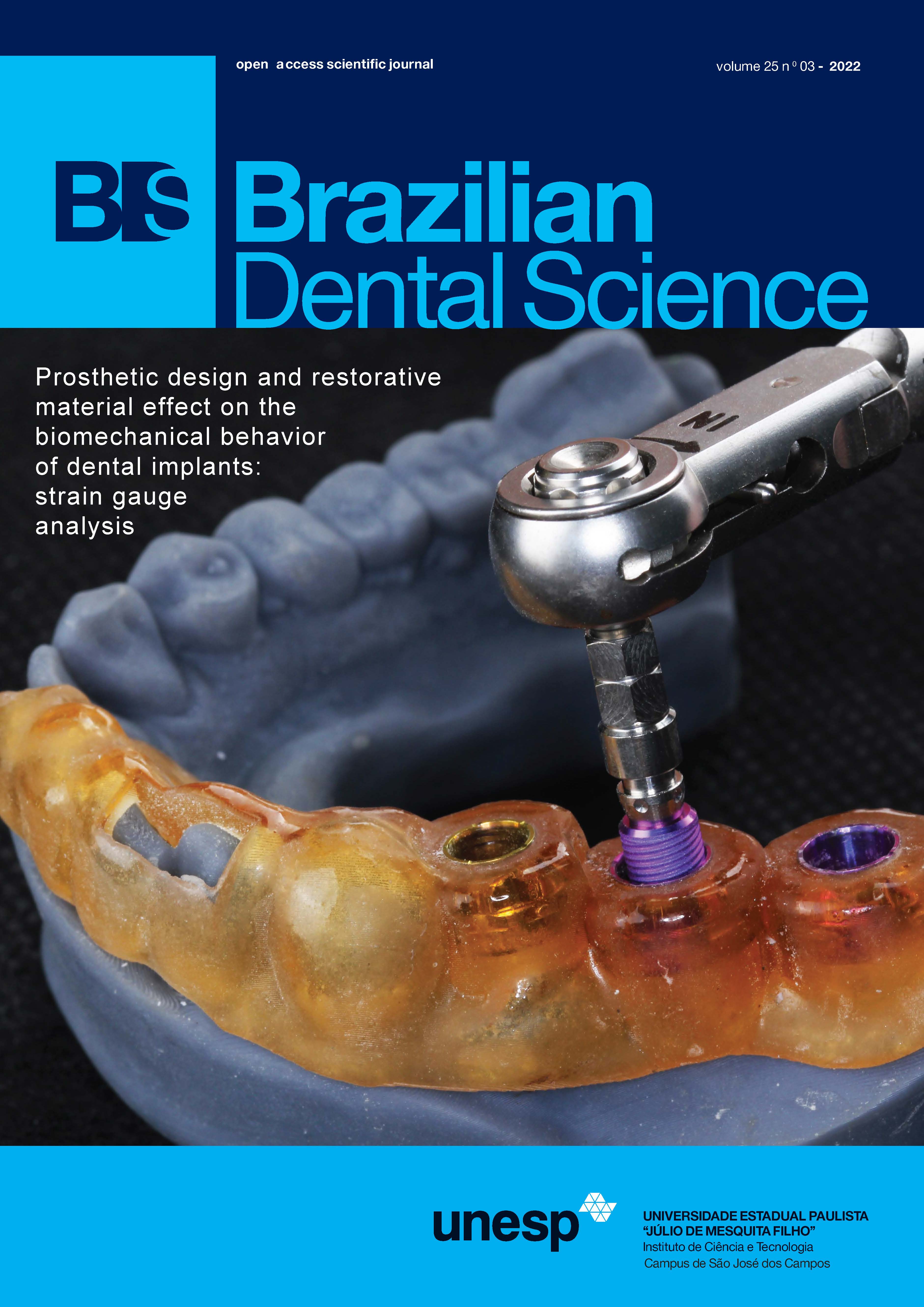Evaluation of palatal volume in children with cleft lip and palate: a comparison of two surgical protocols
DOI:
https://doi.org/10.4322/bds.2022.e3299Resumo
Objective: Compare the palatal volume in children with unilateral cleft lip and palate before and after two surgical
protocols. Material and Methods: Retrospective data collection was performed in a specialized hospital. The
sample comprised 120 digitized dental models divided into, Group 1 (G1) – participants submitted to cheiloplasty
at 3 months (Millard technique) and one-step palatoplasty at 12 months (von Langenbeck technique); Group 2
(G2) – participants submitted to cheiloplasty (Millard technique) and hard palate closure (Hans Pichler technique)
at 3 months and soft palate closure at 12 months (Sommerlad technique). The dental models were evaluated
at Time 1 (T1): before primary plastic surgeries, Time 2 (T2): 1st post-surgical phase, and Time 3 (T3): 2nd
post-surgical phase. The volume was measured through stereophotogrammetry system software. Parametric and
non-parametric statistical tests were applied (alpha = 5%). Results: The intragroup analysis revealed that G1 had a
statistically significant increase in volume at T2 followed by a reduction at T3 (p=0.003); G2 showed a statistically
significant increase of dental arch volume between T1 and T2 (p=0.001). There was no statistically significant
difference in the intergroup and gender analyses (p>0.05). Conclusion: The surgical protocol influenced the
palatal volume of children with unilateral cleft lip and palate. This study suggested that two-step palatoplasty
protocol has a tendency to be more appropriate.
KEYWORDS
Cleft lip; Cleft palate; Dental arch; Imaging; Three-dimensional.
Downloads
Downloads
Publicado
Como Citar
Edição
Seção
Licença
TRANSFERÊNCIA DE DIREITOS AUTORAIS E DECLARAÇÃO DE RESPONSABILIDADE
Toda a propriedade de direitos autorais do artigo "____________________________________________________________________" é transferido do autor(es) para a CIÊNCIA ODONTOLÓGICA BRASILEIRA, no caso do trabalho ser publicado. O artigo não foi publicado em outro lugar e não foi submetido simultaneamente para publicação em outra revista.
Vimos por meio deste, atestar que trabalho é original e não apresenta dados manipulados, fraude ou plágio. Fizemos contribuição científica significativa para o estudo e estamos cientes dos dados apresentados e de acordo com a versão final do artigo. Assumimos total responsabilidade pelos aspectos éticos do estudo.
Este texto deve ser impresso e assinado por todos os autores. A versão digitalizada deverá ser apresentada como arquivo suplementar durante o processo de submissão.




























